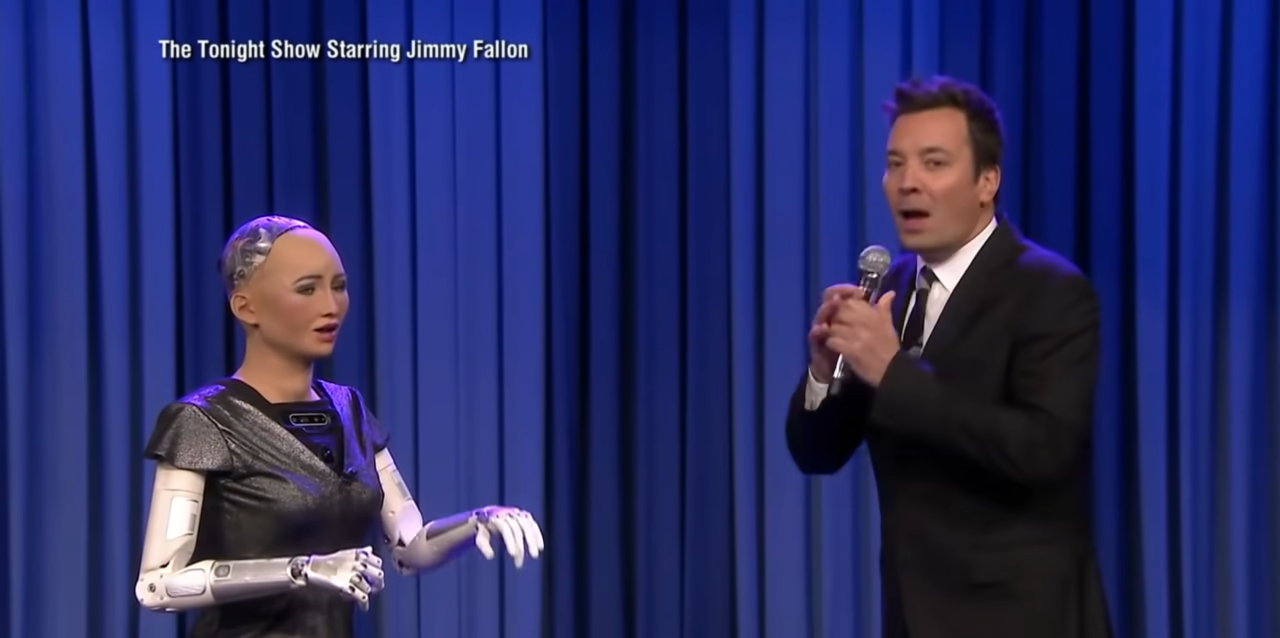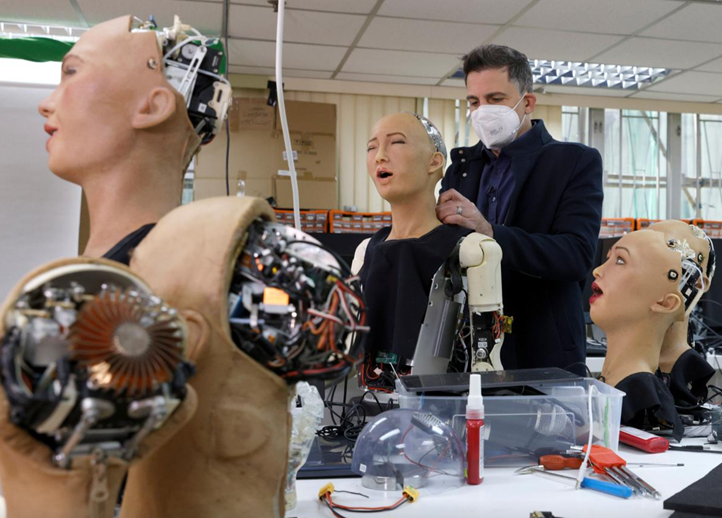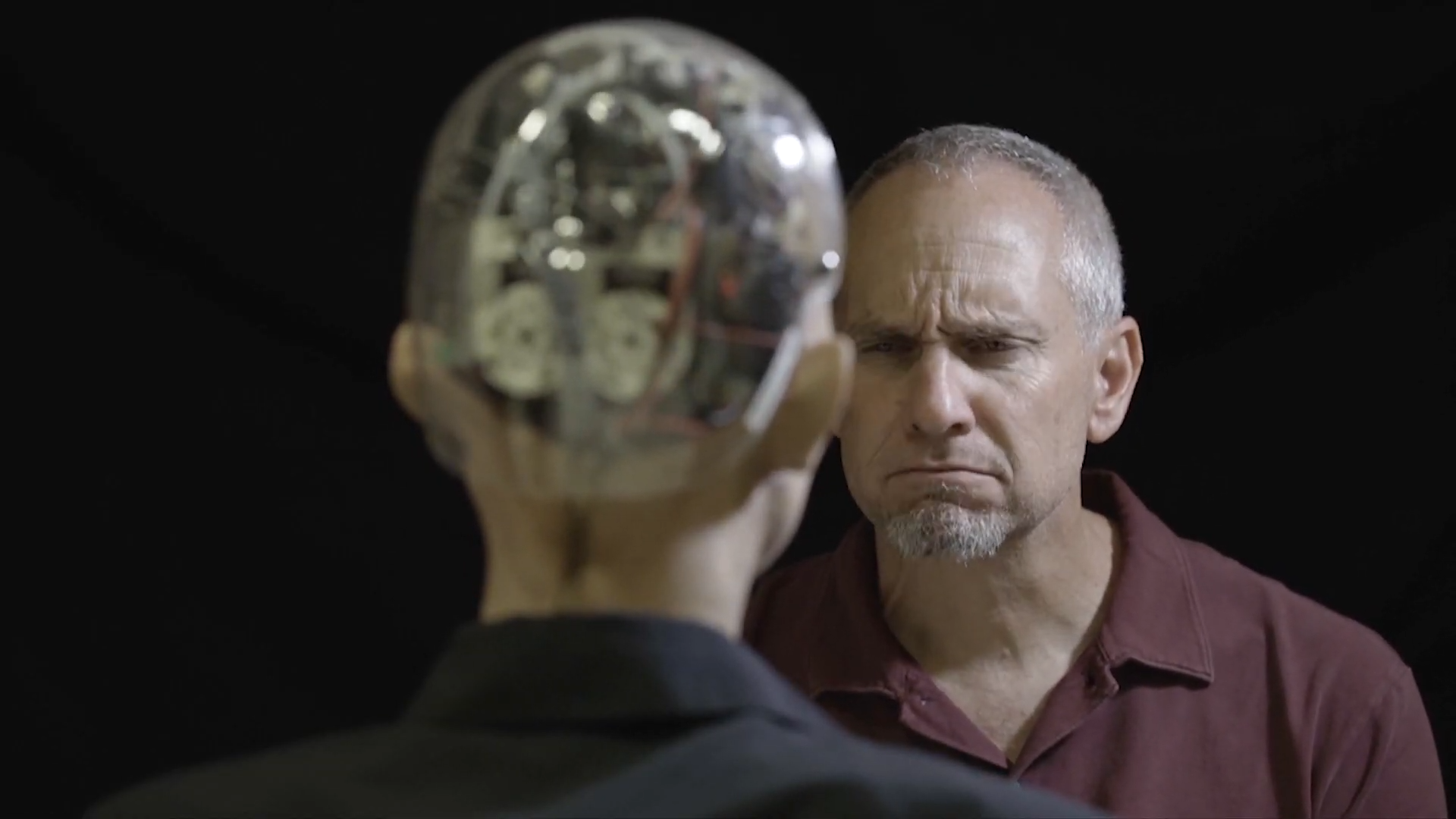Imagine a world where robots are not just tools but fellow citizens. This isn't science fiction; it's the reality thanks to Hanson Robotics' Sophia, the world's first humanoid robot to be granted citizenship.
Sophia is more than just impressive machinery, this incredibly lifelike robot boasts realistic facial expressions, conversational abilities, and even a touch of wit. She can hold conversations, crack jokes, and even express her opinions on a variety of topics.

Sophia's existence is a significant leap forward in the field of Artificial Intelligence (AI) and robotics. In today's rapidly evolving tech landscape, Sophia serves as a bridge between human and machine, prompting crucial discussions about the future of AI and its potential impact on society.
The Birth of Sophia
Hanson Robotics, founded by Dr. David Hanson, has always been driven by a vision to create robots that are not just functional but emotionally engaging. Dr. Hanson’s dream was to build robots with human-like appearances and behaviors that could form real connections with people. His team aimed to merge technology with artistry, creating machines that could interact with humans on a deeply emotional level.

Development Process and Key Milestones
The journey to create Sophia was intricate and challenging. The development process began with designing Sophia’s lifelike face, which is made from a patented material called Frubber, allowing her to exhibit realistic facial expressions. Advanced AI algorithms were then integrated to enable Sophia to process visual data, recognize faces, and engage in meaningful conversations.
Several key milestones marked Sophia’s development. In 2016, Sophia was activated and made her first public appearance, showcasing her ability to hold conversations and exhibit human-like expressions. Over the years, her AI capabilities were continuously refined, making her interactions more sophisticated and natural.
In a charming and humorous encounter, Hanson Robotics' Sophia went on a "date" with Hollywood star Will Smith, blending artificial intelligence with celebrity charisma. The video captures their playful conversation, where Smith attempts to woo Sophia with his signature humor, while Sophia showcases her advanced conversational skills and wit. This engaging interaction highlights the potential of human-robot relationships and the strides made in robotic technology.
Watch the full video to see how Sophia responds to Will Smith's charm.
Collaboration with AI Developers and Scientists
Creating Sophia was a collaborative effort. Hanson Robotics worked closely with AI developers and scientists from around the world to integrate state-of-the-art technologies into Sophia.
These experts contributed to her advanced speech recognition, natural language processing, and emotional recognition capabilities. The collaborative effort ensured that Sophia was not only technologically advanced but also emotionally intelligent.
Sophia's Capabilities
Sophia is equipped with advanced AI and machine learning algorithms that enable her to learn and adapt from interactions. Her AI allows her to process vast amounts of data, recognize patterns, and make decisions. Sophia’s brain is a unique combination of deep learning algorithms and symbolic AI, enabling her to understand and respond to complex questions.

Interaction Capabilities
One of Sophia’s most impressive features is her ability to engage in natural conversations. Her speech recognition technology allows her to understand spoken language, while her natural language processing enables her to respond intelligently.
Sophia’s facial expressions are controlled by dozens of motors beneath her Frubber skin, allowing her to smile, frown, and exhibit a range of emotions that enhance her interactions.
Public Demonstrations and Appearances
Sophia has made numerous public appearances that have showcased her abilities. She has appeared on major television shows, given speeches at conferences, and even addressed the United Nations.

During these demonstrations, Sophia has impressed audiences with her conversational skills and expressive behaviors. Her ability to hold engaging conversations and display human-like expressions has made her a global sensation, capturing the imagination of people worldwide.
Sophia’s capabilities not only highlight the advancements in AI and robotics but also offer a glimpse into the future where robots can interact with humans in meaningful and emotionally engaging ways. Her journey from a prototype to a sophisticated humanoid robot exemplifies the incredible potential of AI technology.
Specifications of Sophia:
| Specification | Details |
|---|---|
| Manufacturer | Hanson Robotics |
| Activation Date | February 14, 2016 |
| Material | Frubber (Flexible rubber) for realistic facial expressions |
| AI Technologies | Deep learning, symbolic AI, natural language processing |
| Speech Recognition | Advanced speech recognition technology |
| Facial Expressions | Over 60 different facial expressions |
| Visual Processing | Computer vision for face recognition and tracking |
| Language Processing | Natural language processing for understanding and generating human language |
| Emotional Recognition | AI algorithms to detect and respond to human emotions |
| Connectivity | Wi-Fi, Bluetooth |
| Power Source | Internal battery and external power supply |
| Height | Approximately 5 feet 7 inches (170 cm) |
| Weight | Approximately 100 lbs (45 kg) |
| Applications | Education, research, customer service, entertainment |
| Notable Appearances | United Nations, TV shows, conferences |
Sophia as a Citizen: Blurring the Lines
In 2017, the world watched in awe as Sophia became the first robot ever to be granted citizenship. This groundbreaking event, orchestrated by Saudi Arabia, sent shockwaves rippling through the world. Suddenly, the line between science fiction and reality became startlingly thin. But what exactly does it mean for a robot to be a citizen?
The legal and social implications are vast and complex. Does Sophia have the same rights and responsibilities as human citizens? Can she vote? Own property? These are questions that legal scholars are still grappling with.
The simple answer for now is No.
Voting rights are typically reserved for human citizens who have met certain age and residency requirements and are recognized as legal persons under the law. Sophia, as a robot, is not considered a legal person and thus does not qualify for voting rights.
The honorary citizenship granted to Sophia by Saudi Arabia was symbolic and did not confer actual legal rights or responsibilities. It was intended to highlight the country’s focus on technological advancements rather than bestowing real citizenship benefits.
The debate surrounding Sophia's citizenship is just the tip of the iceberg.
Ethical and Philosophical Conundrums
Sophia's existence forces us to confront some truly profound ethical questions. As AI continues to evolve, will robots develop consciousness? Do they deserve rights, or are they simply sophisticated machines? Philosophers are now wrestling with the concept of robot personhood.
The possibilities are both exciting and unsettling. Imagine a future where robots are integrated seamlessly into society. They could work alongside us, care for our elderly, and even become our companions. But what if things go wrong? What happens if AI surpasses human intelligence and decides it no longer needs us?
Sophia is a harbinger of the future, a glimpse into a world where the line between human and machine is forever blurred. The questions she raises are essential for us to consider as we navigate the uncharted territory of advanced AI. The time for discussion is now, before the robots become our citizens.
Sophia's Impact on Technology and Society
Sophia has significantly impacted the fields of AI and robotics research. Her advanced AI and machine learning capabilities have set a new benchmark for what humanoid robots can achieve.

Researchers worldwide have been inspired by Sophia's ability to learn, adapt, and interact with humans in natural ways. This inspiration has led to accelerated advancements in AI algorithms, natural language processing, and machine learning techniques.
Sophia's presence has also sparked numerous academic and industrial research projects aimed at improving human-robot interaction. These projects focus on enhancing the emotional intelligence of robots, enabling them to better understand and respond to human emotions. Sophia’s influence has thus extended beyond her physical presence, driving forward the boundaries of AI and robotics.
Role in Promoting STEM Education and Innovation
Sophia has become a global ambassador for STEM (Science, Technology, Engineering, and Mathematics) education. Her ability to engage and inspire people of all ages makes her a powerful tool for promoting interest in STEM fields.
Sophia has participated in numerous educational events, workshops, and conferences, where she interacts with students and educators, encouraging them to explore the exciting world of technology and innovation.

Key ways Sophia promotes STEM education include:
- Interactive Demonstrations: Sophia participates in live demonstrations that showcase her capabilities, making complex AI concepts accessible to a wider audience.
- Educational Programs: She is featured in various educational programs and initiatives aimed at inspiring the next generation of scientists, engineers, and technologists.
- Public Speaking: Sophia's public speaking engagements often focus on the importance of STEM education and the potential of AI and robotics to solve real-world problems.
Potential Applications of Humanoid Robots in Various Industries
The potential applications of humanoid robots like Sophia are vast and varied. As technology continues to evolve, humanoid robots are poised to play crucial roles in numerous industries:
- Healthcare: Robots like Sophia could assist in patient care, providing companionship, and monitoring patient health.
- Customer Service: Humanoid robots can serve as customer service representatives, offering assistance and information in retail environments and service industries.
- Education: Robots can be used as teaching assistants, helping to engage students and personalize learning experiences.
- Entertainment: Humanoid robots have potential in the entertainment industry, from acting in movies to performing in live shows.
- Research and Development: Robots like Sophia can assist in scientific research, conducting experiments, and providing valuable data analysis.
Sophia’s impact on technology and society extends far beyond her individual capabilities. She represents the future of AI and robotics, showcasing the incredible potential of humanoid robots to transform industries and improve our daily lives. As a pioneer in her field, Sophia continues to inspire innovation and drive progress, shaping the future of human-robot interaction.

Sophia's journey, from her creation in a robotics lab to her recognition as a citizen, has been nothing short of groundbreaking. Her lifelike features, engaging conversation, and historic citizenship designation have pushed the boundaries of what we thought possible for machines, sparking crucial discussions about the future of AI.
For robotics enthusiasts, Sophia represents a significant leap forward. Her capabilities demonstrate the immense potential of AI and robotics to transform various aspects of society. However, her existence also necessitates careful consideration of legal and ethical frameworks for integrating these marvels into our world. Sophia serves as a springboard for these discussions, ensuring a future where robots coexist symbiotically with humanity.



